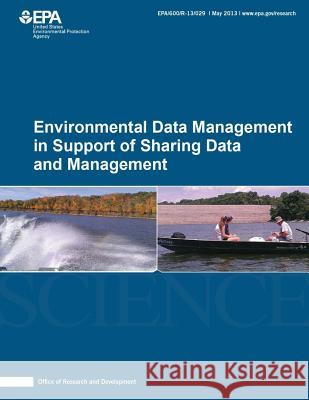Environmental Data Management in Support of Sharing Data and Management » książka
Environmental Data Management in Support of Sharing Data and Management
ISBN-13: 9781500648152 / Angielski / Miękka / 2014 / 218 str.
A data management system (DMS) was developed, tested and demonstrated to store and manage water quality and quantity (WQ2) data pertaining to U.S. Environmental Protection Agency/Office of Research and Development (EPA/ORD) research projects in standardized formats. This approach was taken to facilitate accessibility, sharing, integration, and use of this information for simple calculations and inclusion into models by EPA and other users to inform water management decisions. The objectives of this project were: (1) Build a previously identified hydrologic information system (HIS) Observational Data Model (ODM) and convert existing water quality and quantity data, generated by EPA/ORD-research projects, into this format; (2) Develop, test and demonstrate a scalable DMS based on HIS protocols for storage and management of geo-referenced data; and (3) Enable targeted users to access, exchange and integrate geospatially referenced WQ2 information, and to conduct relatively simple calculations and/or run models to inform water management decisions at various watershed scales. The HIS developed by the Consortium of Universities for the Advancement of Hydrologic Science Inc. (CUAHSI) was used in this project. The CUAHSI HIS ODM model is widely accepted in the United States, is compatible with the National Water Quality Portal, and is gaining international acceptance as the standard for water data. This HIS is web-based, and uses the WaterML format for sharing hydrologic time series data. Within the U.S., many organizations measure WQ2 and various biological parameters. Despite the fact that this information is routinely made available to the public, the difficulties in identifying data sources, syntactic and semantic heterogeneity across data formats and metadata make the discovery, access and interpretation of data challenging for research and other stakeholder communities. EPA-ORD seeks to alleviate these challenges and plans to use CUAHSI's HIS and other tools to integrate time series data generated within its local, regional and national watershed projects with data collected by collaborators, and to share these data with other interested parties.
Zawartość książki może nie spełniać oczekiwań – reklamacje nie obejmują treści, która mogła nie być redakcyjnie ani merytorycznie opracowana.











